Pisa

Former Maritime Republic at the mouth of the River Arno and host to the world-famous Leaning Tower

Pisa’s Leaning Tower is what draws most tourists to this Tuscan city, but there are a number of other attractions which make it worth at least a day trip from nearby Florence. Granted the railway station area isn’t very pleasant, but the local cafes were reasonably priced and the setting at the River Arno is quite grand. Piazza del Duomo, however, with the tower and cathedral, is spectacular.
Pisa Centrale Station is not the closest to the tower, so we arrived from Florence at Pisa San Rossore which is just a few minutes’ walk from the Piazza del Duomo. We spent a good few hours in the Piazza, taking the obligitary silly photos and soaking up the autumn sun, before walking back through the city, across the River Arno to Centrale for the train back to Rome. All in all, a splendid day.
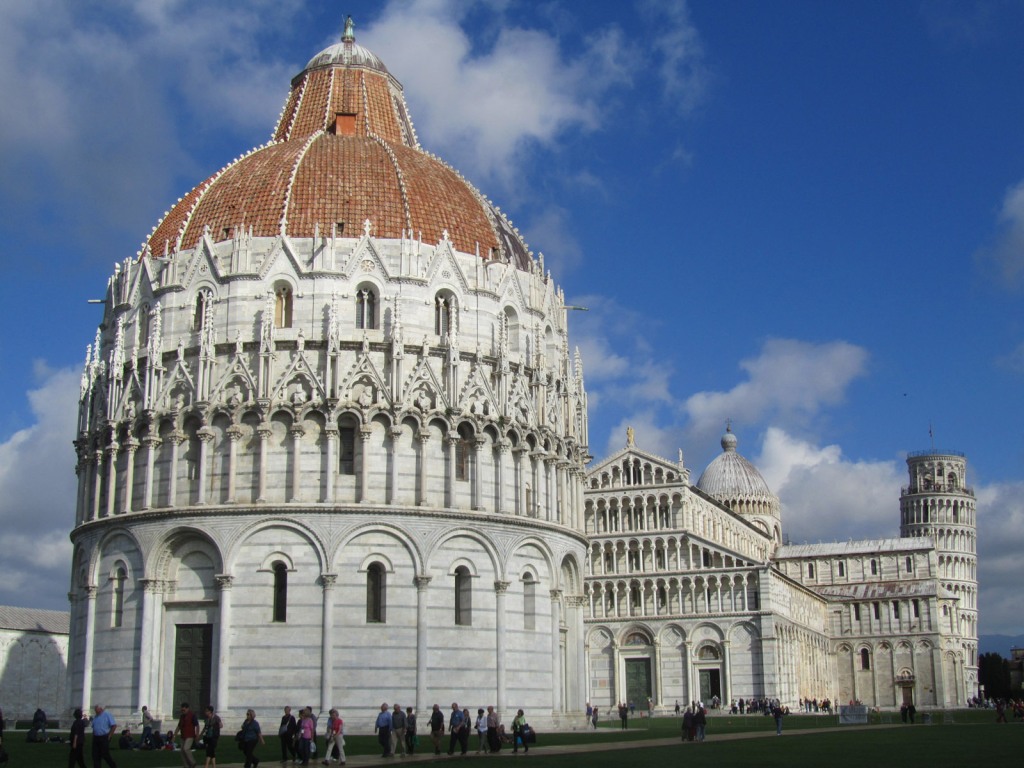
Piazza del Duomo is the religious centre of Pisa, with the Pisa Baptistry, the Pisa Cathedral (Duomo) and the Leaning Tower, which is in fact the bell tower for the cathedral. It is also known as the Piazza dei Miracoli, the “Square of Miracles”.
Bonanno Pisano’s Campanile had started to lean by the time it was barely half built, after a remarkably rapid five years of construction. The tower was not then completed for another 194 years, with the latter stage of construction seeing skewed floors built in an effort to correct the lean.

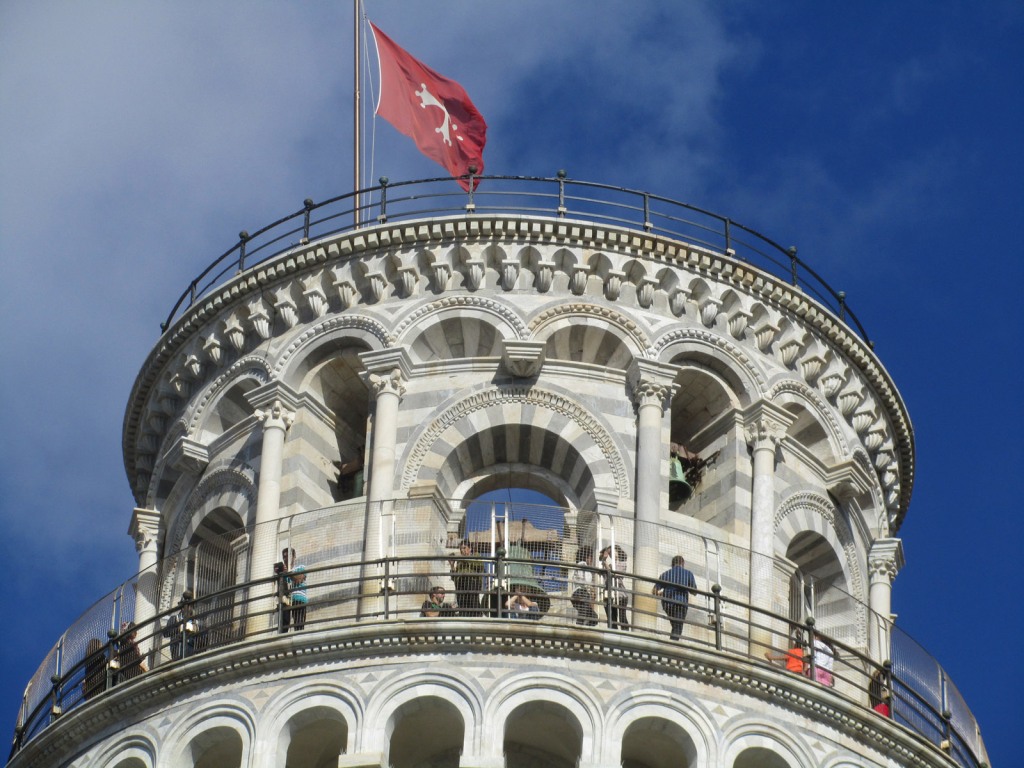
Detail of the tower’s crown, from which Galileo is said to have dropped his balls. For scientific purposes, naturally – the two cannonballs of different weights falling simultaneously, demonstrated the constant force of gravity.
Each level of the tower is surrounded by marble columns, although without a handrail today’s punters are not permitted to wander around them! They just weren’t so safety-conscious back in the 14th century…
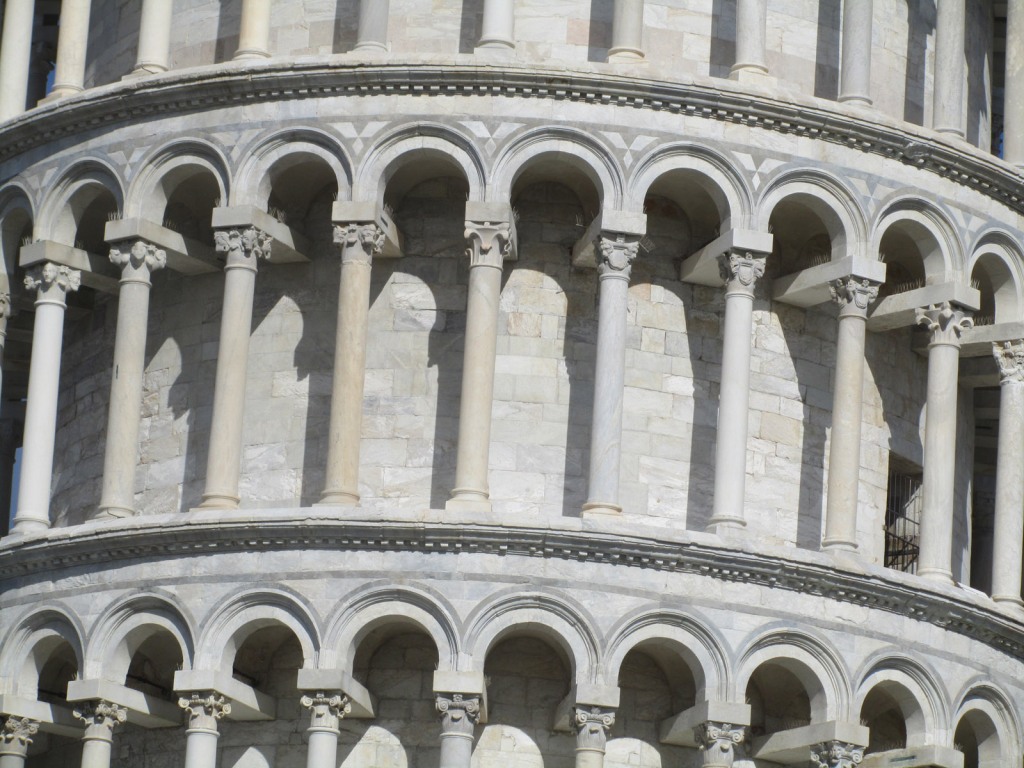
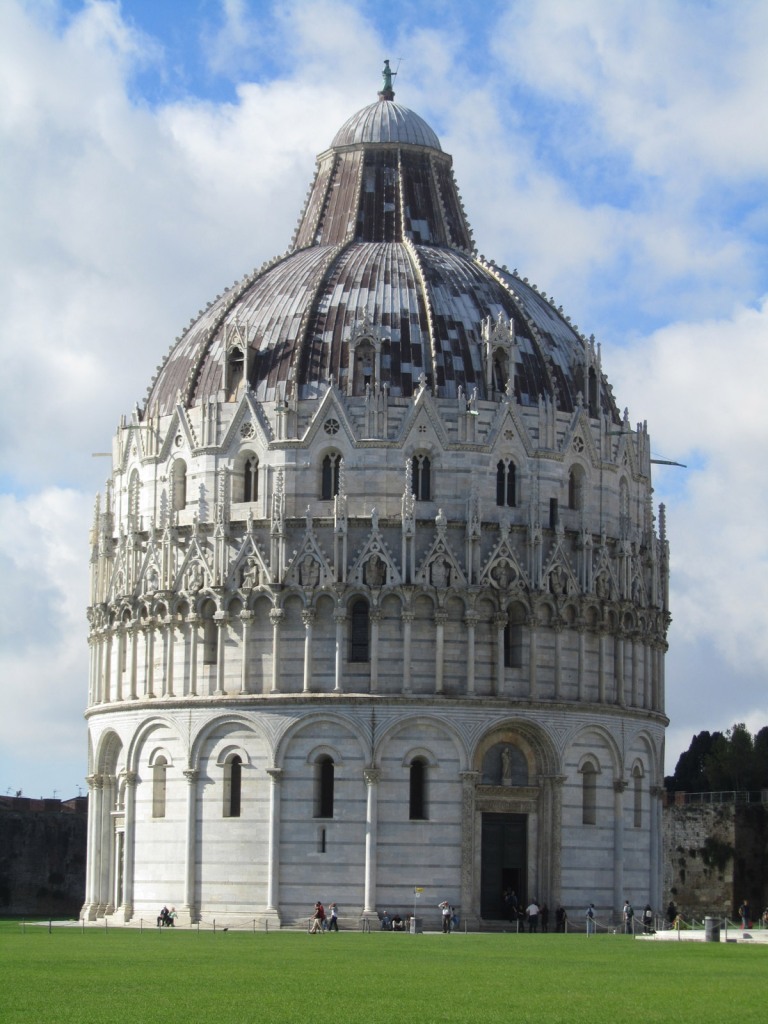
Pisa Baptistry forms part of the triptic of Piazza del Duomo, and took over two hundred years to build from its 1152 commencement. It reminds me a bit of the Radcliffe Camera in Oxford.
The centre of the tower is completely hollow, much to my surprise, but this of course was so that the bell ropes could hang down the middle. Looking up from the base.
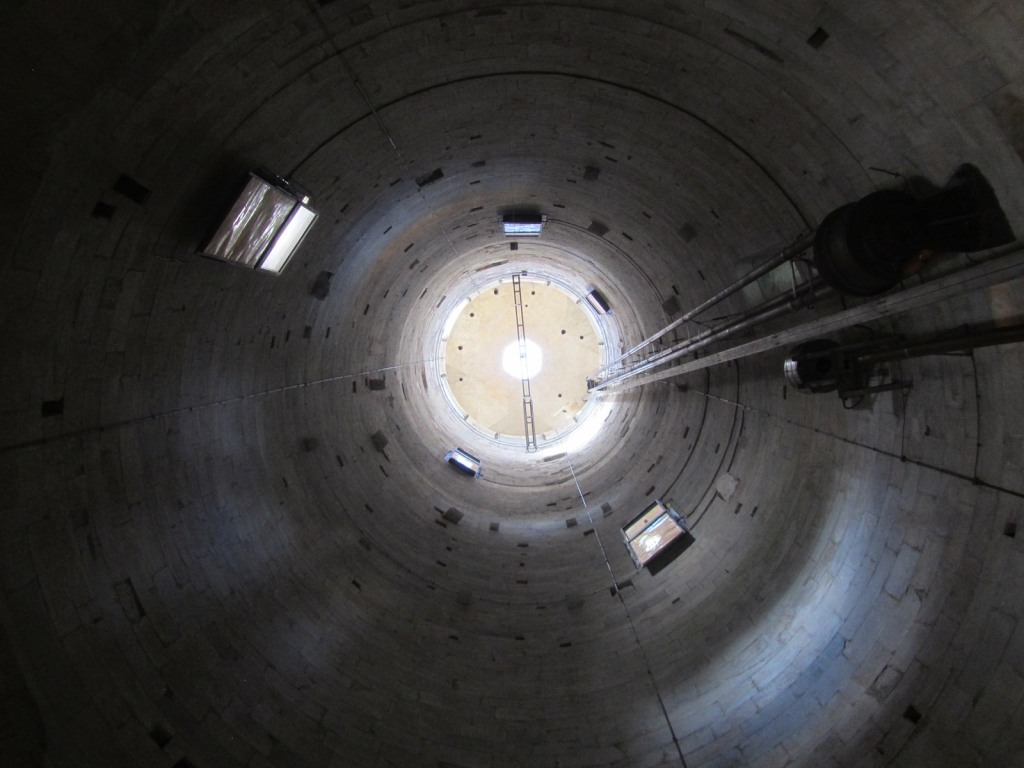
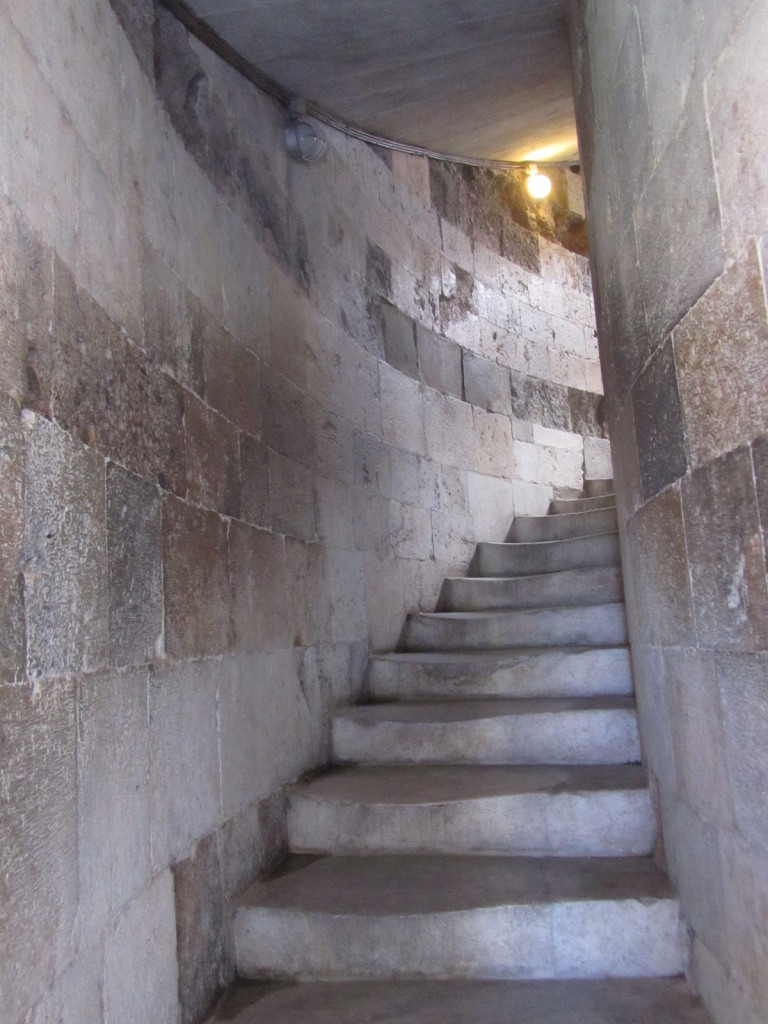
Stairs to the top run between the inner and outer cylinders which make up the tower’s walls. It was a bit of a climb, but not too busy, owing to the €18 charge to get in the door! But I wasn’t going to come this far and not climb it. You can see where the steps are more worn to the outside of the curve, following centuries of plodding.
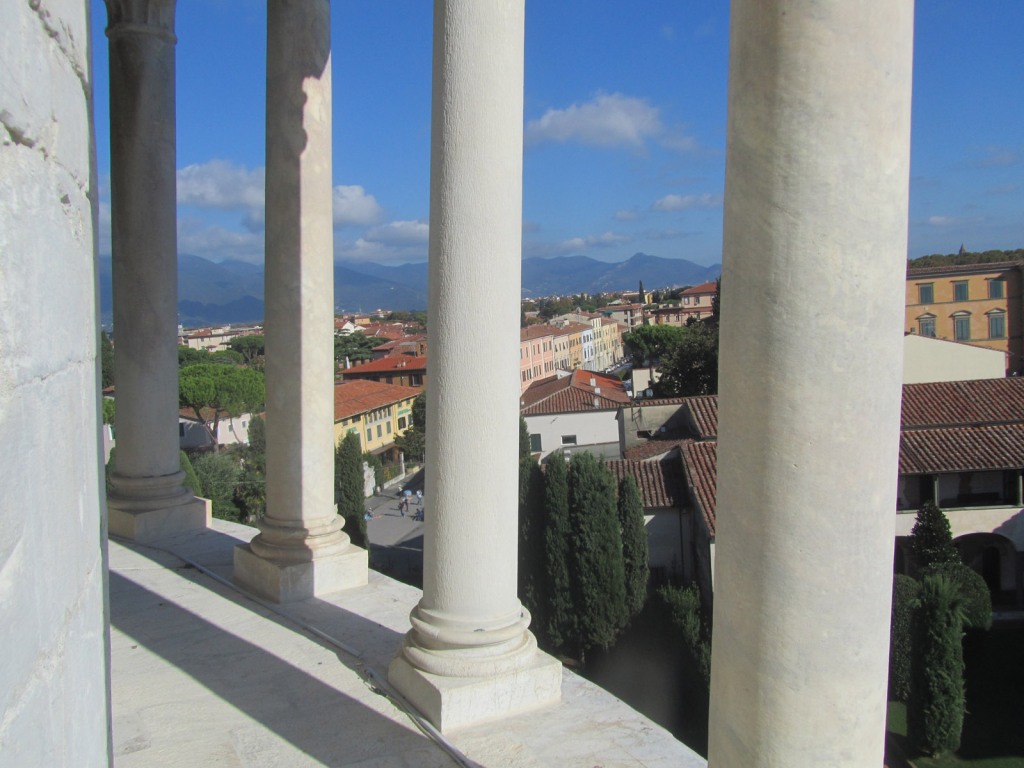

Detail of the marble blocks making up the tower’s crown, the beautiful white stone shone in the sun. The tower was closed during the whole decade of the 1990s, to slightly correct and arrest the lean, making it safe for cheerful tourists like me to traipse to the top once more.
Two of the seven bells around the tower’s crown, all of which were temporarily removed during the straightening works of the 1990s. The largest weighs around three and half tonnes.

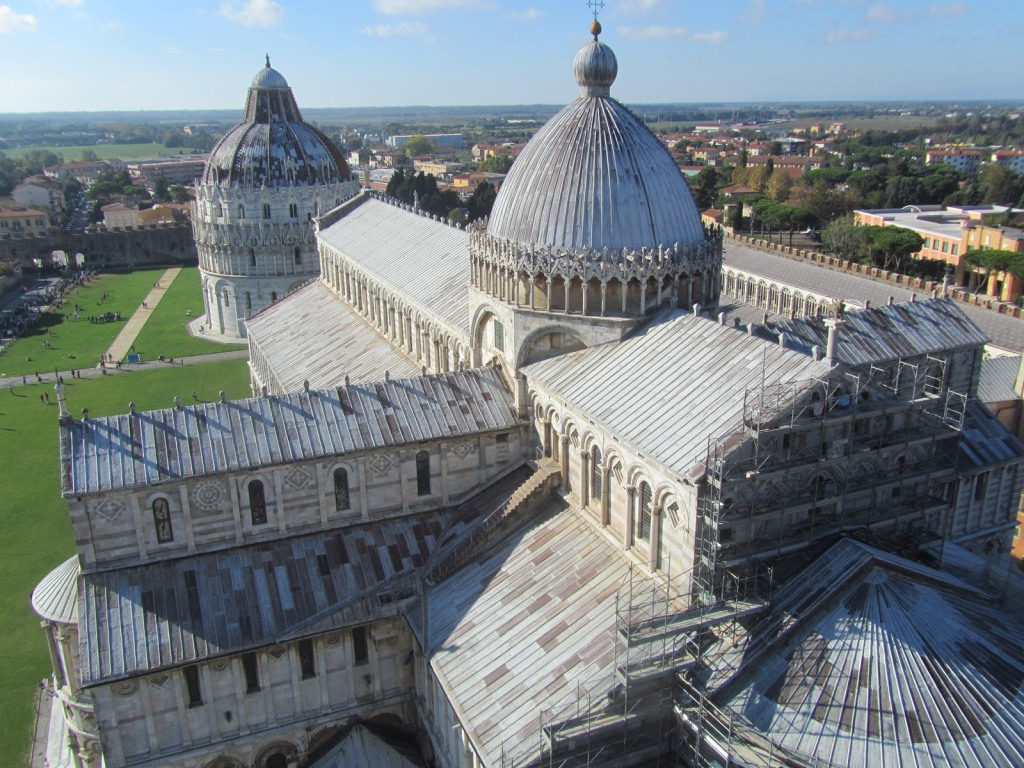
Duomo di Pisa as seen from the top of the Leaning Tower.
Pisa Cathedral itself is the centrepiece of the Piazza, and was also started in the 11th century. Strictly speaking tourists are not allowed to walk on the grass, but the policing was lax and the hordes slowly crept on. Conveniently, we had just finished taking our “holding up the leaning tower” photos when the men with whistles woke up to shoo us away.

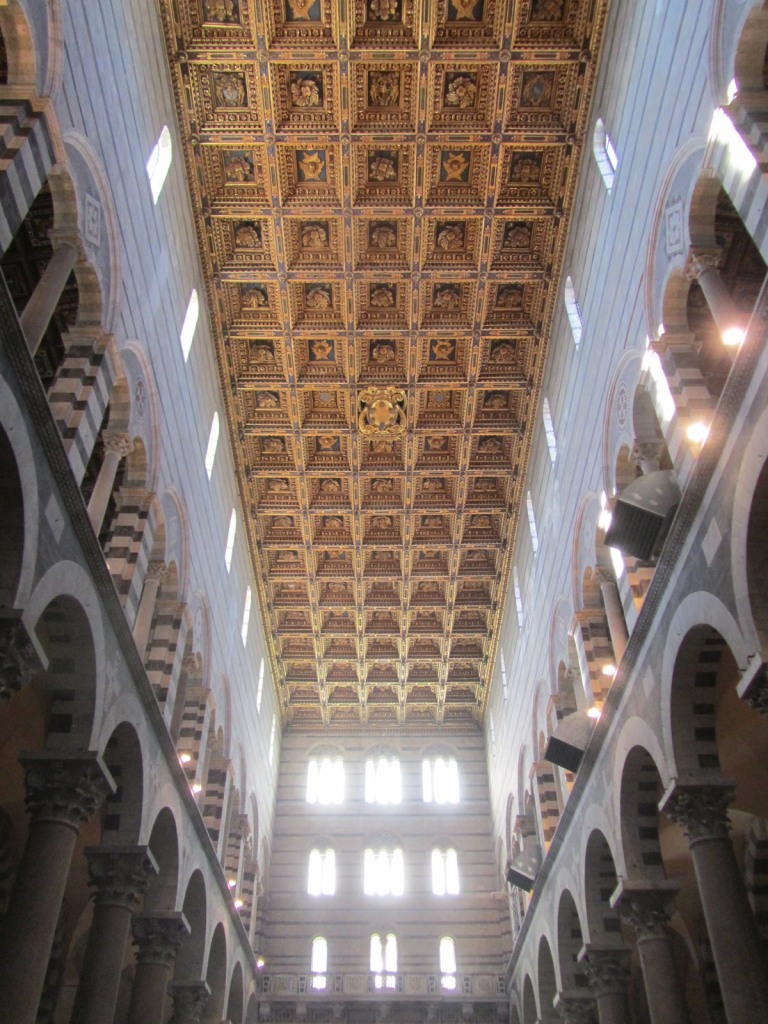
Inside Duomo di Pisa, and the richly panelled ceiling of the cathedral.
Statue of The Three Angels with the Duomo in the background. I’m particularly happy with the lighting and composition of this photo, pleasing to the eye.
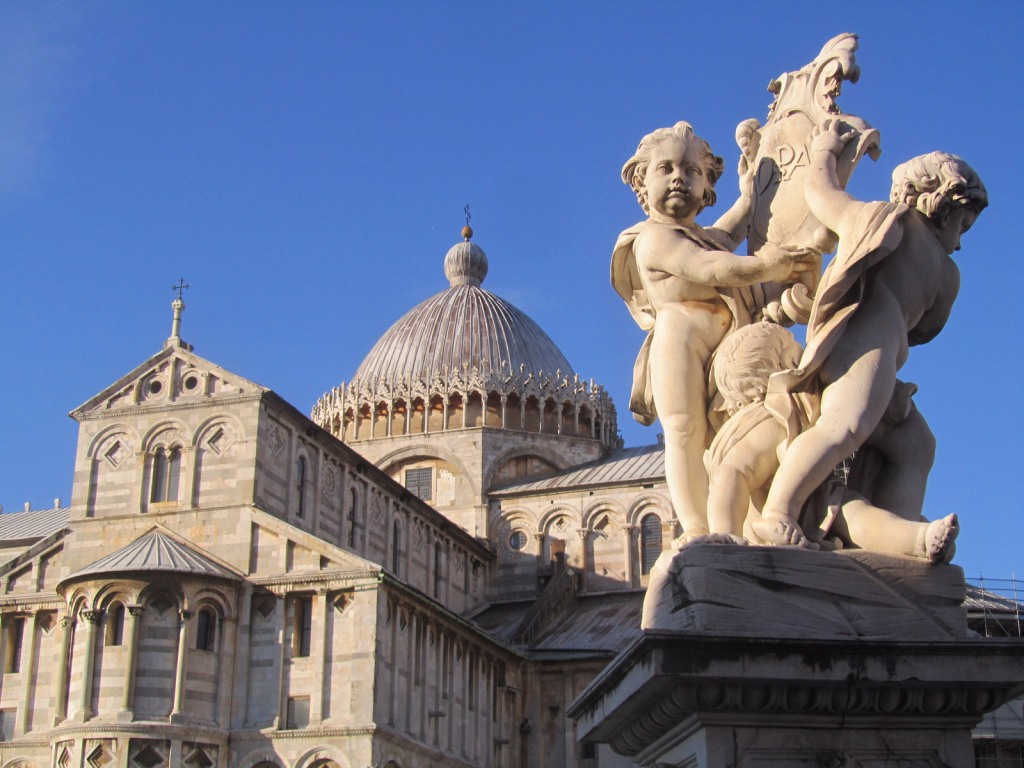

Pinocchio, Italy’s most famous son, is represented in his native form in a Pisa gift shop. Although the story of the wooden puppet who wanted to be a real, live boy was written in Florence, his likeness seemed to be much more widespread in Pisa.
A typical Pisa street on our wander from Piazza dei Miracoli back towards Pisa Centrale.

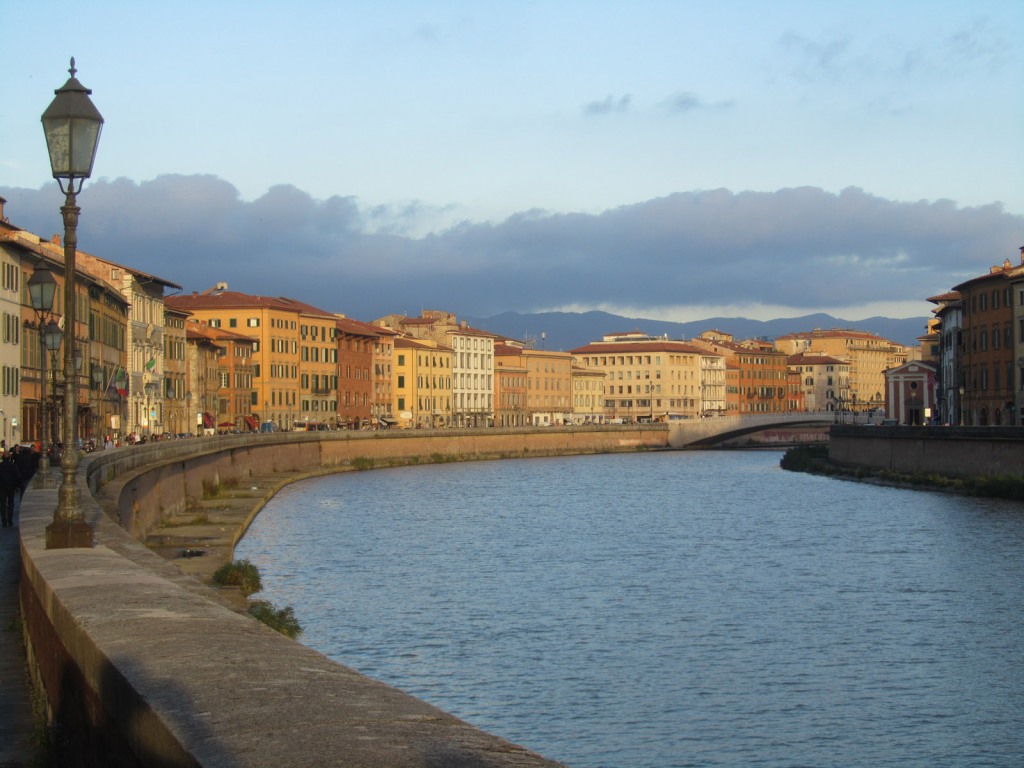
I was pleasantly surprised by the grandeur of the setting of the River Arno, as it flows towards the Mediterranean, having already passed through Florence. We stayed awhile and took some more photos as the sun went down.
Created 2014
